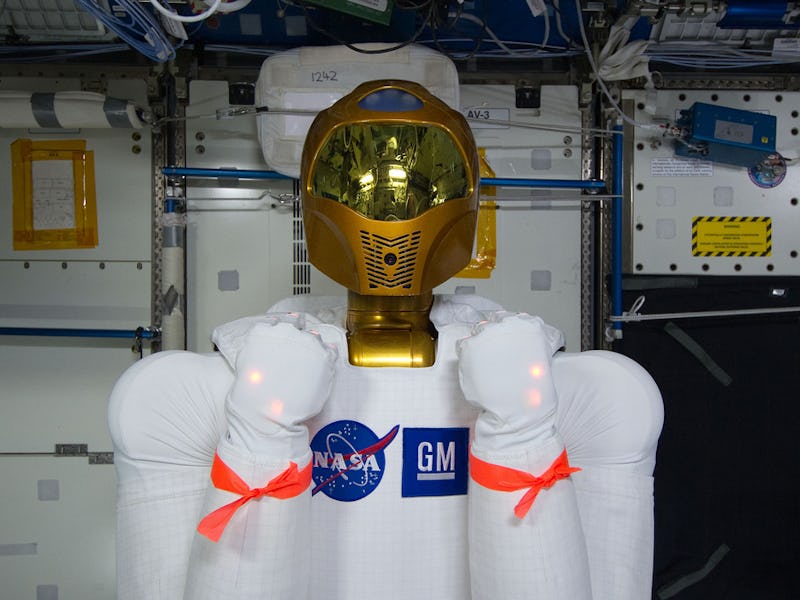NASA’s Robonaut 2x was built to help astronauts with physical tasks while they’re at the International Space Station. Soon, it’ll be able to listen to them, too.
“We’re working on that this year,” said Julie Badger, the Robonaut project manager for NASA on Thursday. The goal, she said, is to speak to the robot and receive stats back from it.
The newest version of Robonaut, which was built in partnership with General Motors, is capable of speeds more than four times faster than the first version. With six different cameras, including two in the head, it’s capable of a wider range of sensing. Its hands, which come with ambidextrous grip, can lift up to 20 pounds — the requirement for any NASA astronaut.
So while strength was easy to achieve, brains may take more work.
“This is the first robot we’ve built, so it’s got some … heritage tools, but we have a series of commands that are linked together and can view output from the robot,” explained Jonathan Rogers, NASA’s deputy project manager of Robonaut.
Robonaut’s only for use inside the International Space Station, though — it “does not have adequate protection needed to exist outside the space station in the extreme temperatures of space” — NASA explains. So while a smart helper bot might be useful on spacewalks, it won’t be the humanoid Robonaut 2x.
Fassbender as David 8 in 'Prometheus'.
So yes, Robonaut is a long way from Michael Fassbender’s David 8 in the sci-fi movie Prometheus. It’s also a long way from TARS in Interstellar.
But unlike TARS, it does have a humanoid design. The lithium iron-powered robot’s upper torso has a human-like head and arms while its lower half is a wheel-like system that can grip onto the railing that human astronauts use to move around.
The first Robonaut was built in 1991 as a collaboration with Defense Advanced Research Projects Agency but the technology has come a long way in the past two decades.
In the current model, astronauts can use virtual reality headsets and gloves to manipulate the robot, a feature that’s critical to operations when the robot is alone in space:
VR "telepresence" allows astronauts to control Robonaut from the ground
Right now there is one Robonaut at the International Space Station and eight on the ground that will be used in future space assets.
The news came during a Facebook Live video from NASA’s Johnson Space Center. You can watch the full Q and A below:
